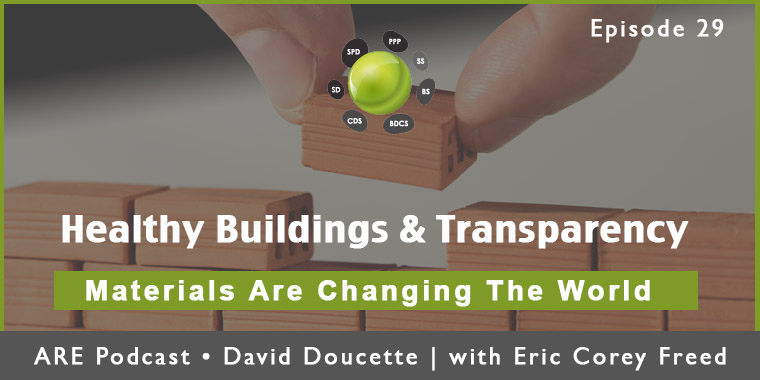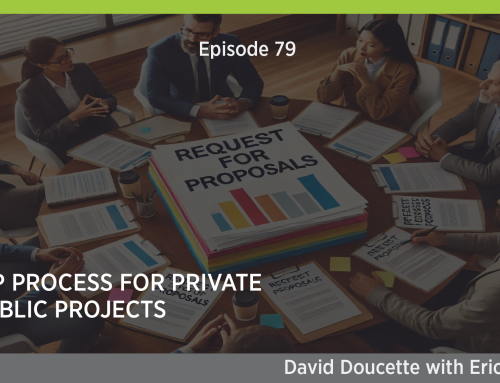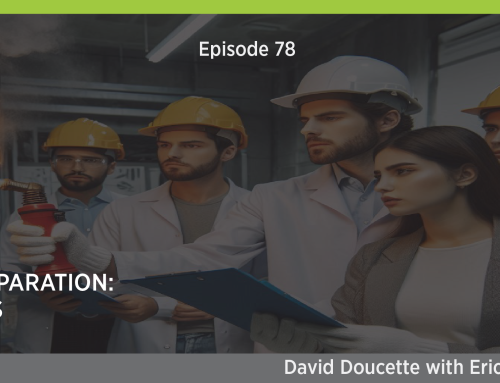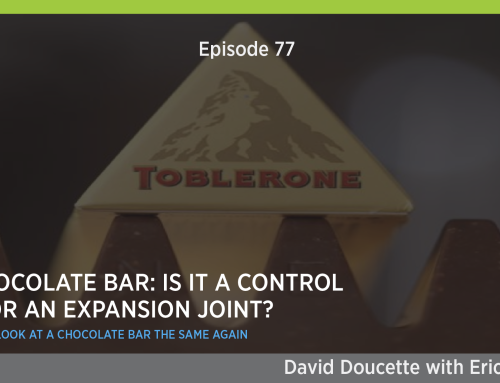Our choices of material selection might seem a minimal undertaking. But when you step back and look at the bigger picture, Architects can have a big impact on the environment simply by the material choices we make.
Eric and I discuss the state of materials used in our buildings today as well as give you solid advice and the six questions you should ask every Sales Rep that you come into contact with.
Listen to the Audio
Click to Watch
Show Notes:
Materials change the world
think what stone did for the Ancient Egyptians
or how steel was forged into swords for armies
or even into girders for skyscrapers in turn of the century Chicago
think of how dimensional lumber allowed expansion of suburbia
1950s: post world war II launched the age of the Petro-Chemical industry
which spawned the chemical and toxins revolution.
1962: Rachel Carson’s book, Silent Spring, launched the environmental movement.
In early 1960s a woman’s lifetime risk of breast cancer was 1 in 20, today it is 1 in 8.
1970: EPA founded (Earth day and Clean Water and Clean Air acts)
1971: President Nixon signing cancer act of 1971
1976: Toxic Substances Control Act (TSCA) – President Ford signed
EPA has the burden of proof on what is toxic/dangerous and in 40 years they have only banned 5 chemicals, but 1500+ new ones released every YEAR.
1980: sick building syndrome
1985: California Prop 65 to control toxins in buildings
1989: banned asbestos and lead paint (decades after lawsuits and health effects felt)
1990 – Today: American Chemistry Council lobbies Congress (last year they spent $55MM)
Chemicals in use and their direct health effects:
Environmental Working Group tested umbilical cord blood for 300 chemicals and found 287, including Teflon, ScotchGuard, and fragrances, containing:
* phthalates
* endocrine disruptors
* known carcinogens
We are quietly becoming genetically modified by toxic chemicals.
People assume that if a product is sold, its safe, but NO ONE has tested it and NO ONE is allowed to know whats in it.
We were sold the dream of “better living through chemistry” but never checked the health consequences.
There are now 80,000+ chemicals on the market, making it impossible to sift through, and the EPA lacks the authority to properly regulate the chemical industry.
Chinese manufacturers have two versions:
highly regulated version for EU and China
and cheap toxic versions for the US market
This is not a secret: everyone in the building and health industry knows about this broken system
FDA guidelines haven’t changed since they were enacted in 1938
Air pollution exposure is an invisible hazard responsible for seven million premature deaths every year, according to World Health Organization estimates.
Regulations have been slow and corrupted so it’s pushed us toward transparency
TOPICS COVERED IN PODCAST:
1. What is Lifecycle Assessment (LCA)?
2. What are Environmental Product Declarations (EPD’s)?
LEED v4 makes heavy use of EPDs
3. Transparency Labels?
The Living Future Institute (the Living Building Challenge folks) have their own called Declare
Mohawk Carpet examples
Healthy Building Network has Pharos
Think of these like a nutrition label for materials
Transparency labels are NOT a guarantee of health: just a disclosure of what’s in it so YOU can make informed decisions.
2. What are the by-products of its’ manufacturer?
3. How is the material delivered and installed?
4. How is the material maintained & operated?
5. How healthy are the materials?
6. What do we do with them once we are done with these materials?
Stink!Unacceptable LevelsChemicalnationThe Human ExperimentToxic Hot Seat MovieThe Corporation
Please Subscribe
Please rate us on iTunes!
If you enjoyed the show, please rate it on iTunes and write a review. It would really help us spread the word about the ARE Podcast. Thanks!






